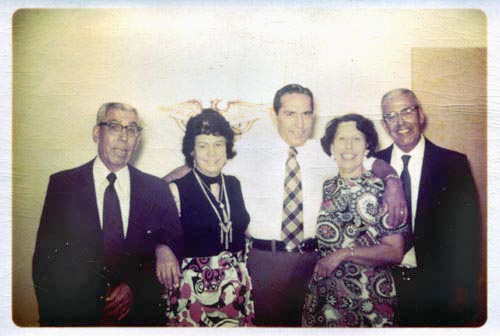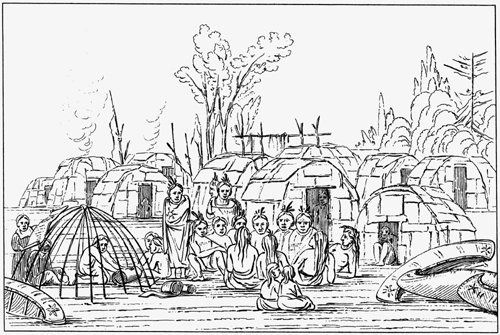Continued federal ownership of the Coldwater Spring/Bureau of Mines property–on a short-term basis–is a reasonable outcome of the current Department of Interior environmental review process, one that many who disagree on other issues may agree upon, even though they will not agree publicly. The sticking points are about what happens afterwards.
As noted earlier, an online petition requesting the transfer of the property from the federal government to the Dakota people, specifies that the “an environmental restoration of the site by the Federal government” should take place “before the transfer to Dakota communities,” since “the Federal government via the Bureau of Mines is responsible for the current state of the land surrounding the spring,” meaning that ” it is their responsibility to restore the site to its original, pristine condition at Federal expense.” The petition goes on to state that “a full restoration of the site means the restoration of Dakota rights and title to the land. Coldwater Spring must be returned to the people of the Dakota Nation, who are the rightful care takers and protectors of that land.”
Clearly the petition does suggest a period of continued federal ownership during which the work of cleaning up the property would be done. This is a goal that many others who have different long-term solutions have supported in the past. During this period of federal ownership, according to varying scenarios, cleanup of the property would take place, along with restoration of the property’s vegetation, further study of the plant resources, cultural resources, archaeological resources, and its cultural heritage. (In fact, this further study, particularly archaeological study, must be done prior to full restoration, so that the restoration takes into account all that is learned.) There does not appear to be any tribal entity that wants to bear the cost of this process, nor should it be any tribe’s responsibility.
What happens after that period of study and restoration is where the disagreements start. Those who want the transfer of the property to the Dakota may reasonably insist that a process begin early on to determine what Dakota groups would be willing or able to receive the property. During the period of short-term federal ownership intensive consultation with Dakota groups should also take place, so that nothing is done to the property that conflicted with the beliefs of Dakota people. Finally, if the process of transfer to Dakota communities does not take place in the near term, a commitment should be made in law that if any later transfer of the property out of federal hands takes place that Dakota communities will have priority. The details of this entire process of restoring the land to the Dakota should be part of any final EIS from the Department of Interior or it should be something demanded by the public afterwards. However, even it the details of such a process are not found in the final EIS, having the federal government keep the property for a time will allow the time for the Dakota people to unite behind a detailed proposal. If the propery were given away by the federal government to another entity, there would be less opportunity for the Dakota to come up with their own plan.
These are reasonable solutions to the current process for studying what should happen to the Coldwater/Bureau of Mines property. These are not the solutions that anyone is calling for, which means that it is a good compromise for all. In particular this is not the way the National Park Service has viewed the current process. The Park Service wants to limit the issues and the discussion to the cleanup and restoration process. This is why many people who have been involved in the Coldwater Spring issues for a long time have a problem with the current Bureau of Mines comment period.
The Park Service has put the cart before the horse yet again. (We could tell you stories about its having done so in the past.) Having announced the decision in December about keeping the Coldwater property in federal hands and cleaning it up, the Park Service had its open house on February 23 to get comment on how to accomplish the cleanup. The current 30-day comment period is to allow further comment on that question. But many of those who want to comment have real reservations about continued federal ownership. By commenting they appear to be accepting the initial premise. Why should they submit comment on something when they don’t agree with the preferred outcome proposed by the Department of Interior?
The answer is that everyone wants the property to be cleaned up in some way. Some might suggest that a few buildings should remain standing for re-use. The Park Service does not appear to want that, but that is something that could be part of the comments submitted. Others may want a lot of different things in terms of the cleanup process. These are all important points to make in submitting comments. But it is also important that those who want to further the prospect of Dakota ownership of the property not only continue to insist that this transfer must take place at some point in the future, but also offer a detailed and constructive plan for this to be implemented. In the current comment period details about the restoration of the land to the Dakota are as important about the details of restoration of Coldwater’s plant populations.
Here are the details from the Park Service about how to submit comments:
The [Feb. 23] meeting opened a 30 day comment period which ends March 25, 2009. While comments were received at the open house, additional comments are welcome by e-mail, fax (651-290-3214), or by mail either letter or comment card and mailing to:
Bureau of Mines/Coldwater Project
Mississippi National River and Recreation Area
111 Kellogg Boulevard East, Suite 105
St. Paul, MN 55101

